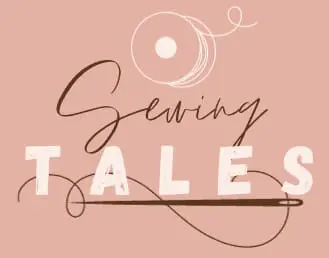Sewing has been a fundamental craft for centuries, evolving in techniques and materials. One unconventional yet intriguing addition to the sewing toolkit is fishing line. Fishing line has become very popular nowadays due to its transparency feature. However, compared to traditional thread it is very difficult to use.
That’s why sewists are often confused whether to use it or not? In this blog, we will solve this confusion and will explain the advantages, drawbacks of sewing with fishing line, answering the pivotal question: Can you sew with a fishing line?
So, let’s begin!
1.1 Why Sew with Fishing Line?
Before we dive into the main issue, let’s first understand why artisans have begun using fishing line instead of traditional fabrics. Here are some of the benefits of using fishing line.

1.1 Strength and Durability
If you are looking for sturdy seams then you should definitely go for a fishing line, it has more durability and robustness than traditional thread.
Fishing line has also outperformed traditional threads in terms of wear resistance and thus has become an attractive choice for projects necessitating enduring and sturdy seams.
1.2. Invisibility
One of the main reasons why fishing line is popular is its transparency, it remains nearly invisible during stitching.
So, if you want your designs to remain invisible then fishing line is your best bet. It is also best for creating structured hems and adding volume to ruffles.
1.3. Hemming and Ruffles
One of the remarkable uses of fishing line in sewing is for fashion design such as hems and ruffles. The unique attributes of fishing line, such as its rigidity and resilience helps sewists to craft with precision.

1.4. Jewelry and Beading:
Fishing line is often used in the jewelry making process, especially bead jewelry. The color transparency of the fishing line highlights the beads, crystals, or embellishments of your jewelry.
So, if you are thinking of making your own jewelry then you should choose fishing line instead of traditional thread. Traditional thread is not as strong as fishing line, it can’t hold the weight of your crystals and beads well.
1.5. Heavy Projects
Fishing line is best for outdoor and heavy weight projects, its durability and resistance make it perfect for heavy projects like camping gear and sails.
So, if you are in need of thread to sew a tent or to repair a backpack always choose fishing line instead of traditional thread, It can easily withstand the challenges of outdoor usage.
2. How to Sew with a Fishing Line?
Now, let us get back to the main issue; How can you sew with a fishing line? Here’s how you can use fishing line effectively:
2.1 Choosing the Right Fishing Line
First of all, you need to select the right fishing line because not all fishing lines are suitable for sewing.
Among all lines, only monofilament fishing line is preferred for sewing projects. This type of fishing line offers transparency, flexibility, and strength as benefits. Other fishing lines don’t offer these benefits, that’s why you need to opt for a clear monofilament fishing line.

2.2 Using a Sewing Machine
If you have a sewing machine, then the process is easy for you. Just replace the thread with a fishing line in your machine. After that, adjust the machine settings for your specific project and then sew as you like.
2.3 Hand Sewing Techniques
If you prefer hand sewing then fishing line can be really worthwhile substitute for threads. To use it, you just need to properly replace your traditional thread with a fishing line.
though, it may take some practice to become accustomed to it. Here are some tips for using fishing line:
2.4 Thread the Needle
You need to practice sewing regularly because it will take some time for you to get accustomed to it.
2.5 Stitching
For stitching, as you already know, You first need to thread the fishing line through a needle with a sharp point properly. After that, just sew as you would fancy with regular thread. But make sure to remain mindful while utalizing fishing lines because it can easily cut through delicate fabrics or your finger.
2.6 Knotting
Knotting fishing line can be quite tricky due to its slippery nature. Always use double or triple knots to secure your stitches.
3. Precautions and Tips
While sewing with a fishing line offers numerous benefits.
It also presents many challenges that require specific precautions. Here are some tips to keep in mind while using fishing line:

3.1 Needle Choice
Since the fishing line is stiffer and thicker than traditional thread, you need to choose the right needle for it. Here are some tips:
3.2 Size
To successfully sew with a fishing line, you need to opt for a larger and sturdier needle. Fishing lines are best for heavy outdoor projects. A bigger needle helps the fishing line pass through the fabric easily.
3.3 Material
Fishing line is quite difficult to use, that’s why you need to choose needles made of materials like stainless steel or titanium. These materials are durable and can withstand the stiffness of fishing line easily.
3.4 Knotting
To ensure your stitches stay in place use double or triple knot the ends. Also, you can apply a small amount of clear nail polish to the knots to prevent them from unraveling.
3.5 Safety First
Make sure to use fishing line carefully because these lines have sharp edges so handling it can be quite difficult. It can cause cuts and injuries in your hands.

Closing Thoughts
In short, many people believe that sewing with a fishing line is a hard task but it is not. However, by using the step mentioned above, you can use it easily, it include braided fishing line and waxed braided cord as alternatives to traditional sewing thread, you can use it easily.
Useful when you want to create a curly hem or employ a zigzag stitch for added decorative flair, Fishing line brings a unique set of benefits to sewing, including strength, invisibility, and versatility.
Also, Monofilament thread, such as nylon thread, offers the advantage of invisibility when used in sewing, making it ideal for projects like cross stitch gridding, a fishing line can provide the perfect balance, enhancing your sewing fabrics with its unique properties.








10 Comments
The next time I run out of the stitching thread, I won’t have to abandon my sewing for a later time. On the contrary, I will use a fishing line since it has proven to be a great alternative. Its strength and invisibility make it an ideal choice for almost any sewing project. I am glad you took the time to discuss how a fishing line can do a great job in sewing.
Sewing the material with fishing line is somewhat tricky & hard work , the matter of sewing it made me think about the hands of the tailor . Still in this sophisticated era it’s also done by machines , the article is a amusive & informative one .
Wow! This article on sewing with fishing line is a comprehensive guide that truly stands out. It excellently explores an unconventional yet practical approach to sewing, offering a detailed roadmap for using fishing line in crafting. The article’s thoroughness in explaining techniques, coupled with practical tips, makes it an invaluable resource for anyone looking to venture beyond traditional sewing materials.
I found this article on sewing with fishing line to be incredibly insightful. Exploring the unconventional use of fishing line in sewing, the guide not only addresses the popularity of this transparent material but also delves into its challenges compared to traditional thread. The comprehensive breakdown of advantages, drawbacks, and the ultimate question of whether you can sew with fishing line makes it a valuable resource for sewists seeking clarity in this unique crafting approach.
Anna, your guide on sewing with fishing line is illuminating! Exploring the benefits, like strength and invisibility, sheds light on this unconventional yet advantageous choice. The emphasis on durability and wear resistance makes fishing line a sturdy alternative. The insight into its use for hems and ruffles in fashion design adds a creative dimension. A comprehensive read for those venturing into the unique realm of fishing line sewing! 🎣🧵
This article came to my rescue with a perfect solution for those unused fishing lines lying around. Discovering the benefits of using them for sewing, such as strength and durability, was enlightening. The fact that they remain nearly invisible during stitching adds to their appeal. The guide along with safety tips was very detailed and well explained. I’m excited to repurpose those fishing lines creatively, thanks to this comprehensive guide.
Simply and thoroughly explained the usage of the fishing line. It’s quite useful and can be referred for those who have passion in sewing. Thanks for your effort.
The usage of the fishing line is well-explained. The simple narration on usage is quite engaging and I have gone through the write up till end. It’s useful.
Although I don’t sew my own clothes this is a very important life skill that should be learned and could be applied in my life. This article has given me the information on how to sew my own clothes and is very insightful on the field of sewing. Now whenever I get a tear on my clothes, I could just use the information provided in this article and be able to sew my own clothes back together.
This comprehensive guide by Anna Smith on sewing with fishing line is incredibly informative. It delves into the reasons why sewing enthusiasts are opting for fishing line, emphasizing its strength, durability, and invisibility during stitching. The benefits of using fishing line for hems, ruffles, jewelry, and heavy outdoor projects are clearly outlined, providing a broad perspective on its applications.
The guide not only explains the advantages but also offers practical insights into how to sew with fishing line. It covers the crucial step of choosing the right fishing line, whether for machine or hand sewing, and provides valuable tips for threading, stitching, and knotting.